An egg shaped kitchen timer is a small, spring-wound device used to measure cooking time, typically ranging from 0 to 60 minutes. Designed in the shape of an egg, it combines practicality with a fun, decorative touch, often found in home kitchens. Made from metal, it contains a mechanical internal mechanism that operates without batteries or electricity. This type of cooking timer is ideal for boiling eggs, baking, or any task where precise timing is important.
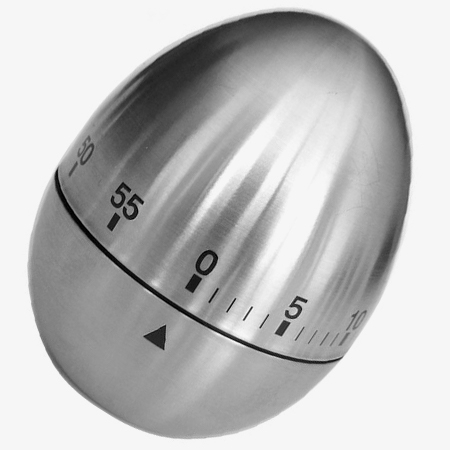
Egg Kitchen Timer Adopts Stainless Steel Material
- Durability. Stainless steel is tough and resistant to impact, so the egg shaped timer can survive accidental drops or kitchen chaos without easily breaking.
- Corrosion Resistance. Stainless steel resists rust and corrosion, which is especially important in a kitchen where it's exposed to steam, moisture, and spills.
- Heat Resistance. It won't be affected by high temperatures if placed near a stove or oven, unlike plastic, which can warp or melt.
- Easy to Clean. Its smooth, non-porous surface makes egg kitchen timer easy to wipe down and sanitize, helping maintain kitchen hygiene.
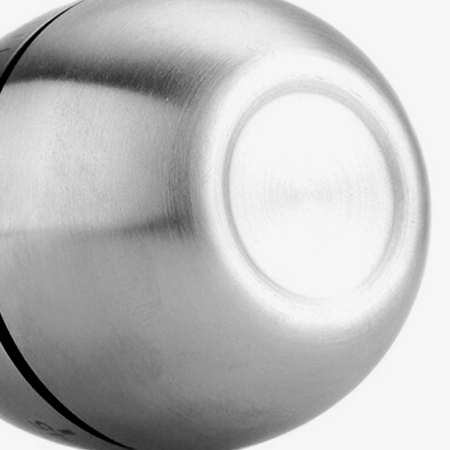
Flat Bottom Design of Egg Timer
- Stability. A flat bottom keeps this mechanical kitchen timer from rolling around, especially on smooth kitchen countertops. This helps prevent accidental falls and damage.
- Ease of Use. It can stand upright, making it easier to see the dial and adjust the time accurately. A stable base allows you to operate the timer easily.
- Space Saving. Egg kitchen timer can stand upright in drawers or cabinets, taking up less space than if it had to lay on its side.
Applications
SISCO mechanical kitchen timers have a wide range of application fields beyond simply timing cooking tasks. Primarily used in home and professional kitchens to track cooking and baking durations, cooking timers help prevent overcooking and ensure food safety. In education, they support time management during classroom activities or timed tests. In healthcare, they assist with medication reminders and therapy sessions. Fitness enthusiasts use them for interval training or workout sets.

Laboratory

Study

Yoga
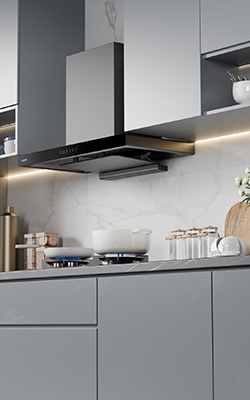
Cooking
| Model | SISCO-KT-01 |
| Type | mechanical timer |
| Material | stainless steel |
| Timer range | 60 mintues |
| Dimension | 61*75mm |
| Alarm time | about 3~4s |
| Net weight | 147g |
Dimension:
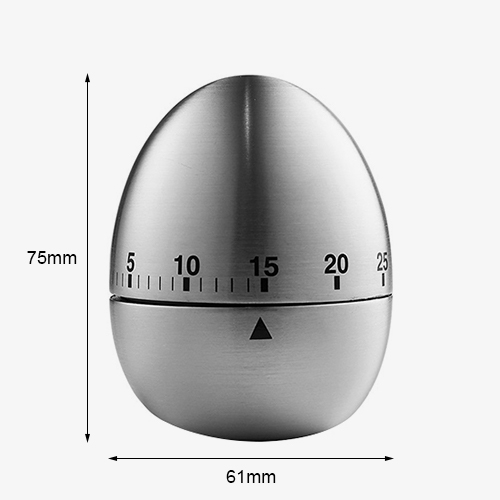
Operating Steps:
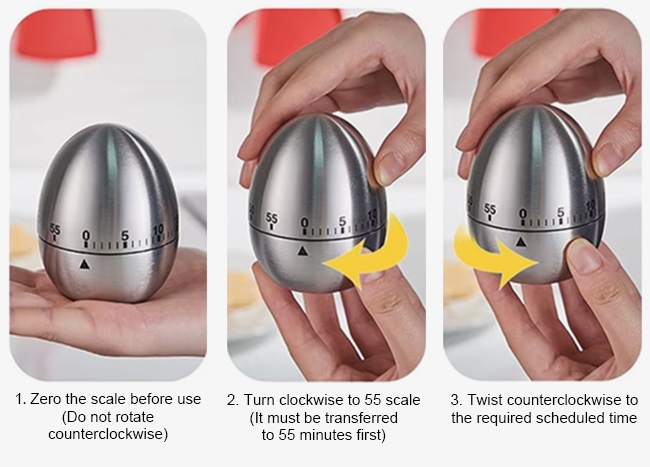
Q1: Can I use a kitchen timer for activities other than cooking?
A1: Yes, a kitchen cooking timer can be used for a variety of activities beyond cooking. It's a great tool for time management, helping you stay focused on tasks and avoid distractions. It's also helpful for exercise routines, like setting intervals for high-intensity workouts or yoga poses.
Q2: What should I consider when buying a kitchen timer?
A2: First, look for ease of use. A simple, intuitive interface with clear buttons is essential, especially when you're busy cooking. Consider the display: large, easy-to-read digits are crucial, particularly if you're working in a busy or have limited space. Durability is another factor; choose a timer made from sturdy materials that can withstand kitchen conditions. Waterproof or splash-resistant models are ideal for high-moisture environments. Portability is also important if you move it between kitchen stations.
Q3: Is it better to use a mechanical or digital kitchen timer?
A3: The choice between a mechanical or digital kitchen timer depends on personal preference and the specific needs of the user. Mechanical kitchen timers are often favored for their simplicity and durability. They don't require batteries and can last a long time with minimal maintenance. Their analog nature is also appreciated by those who prefer a more hands-on, traditional experience in the kitchen. On the other hand, digital kitchen timers offer precision and convenience. They typically provide more accurate timekeeping, with some allowing you to set multiple timers at once. Digital timers are usually more versatile, with additional features like countdown memory, stopwatches, and larger displays for easier reading.
Tips: Is it easy to set the desired time on the egg kitchen timer?
Yes, setting the desired time on an egg shaped kitchen timer is generally easy and straightforward. To set the time, you usually turn the top or entire body of the timer clockwise past the maximum time mark (often 55 minutes) to wind the internal spring mechanism. Then, turn it counterclockwise to the desired number of minutes. This ensures the timer has enough tension to ring when time is up. The numbers and tick marks are typically easy to read, and the turning mechanism offers just enough resistance to feel secure without being difficult to move. While the design may vary slightly between brands, most egg kitchen timers follow this same principle.
Thank you for buying industrial test and measurement equipment on SISCO.com, all products sold by SISCO and the partner cover a 12 months warranty, effective from the date of receiving the products.
What is covered?
SISCO is responsible for providing free spare parts, and free technical support to assist the customer to repair the defective products until the problem is solved.
What is not covered?
- Product purchased from anyone other than a SISCO store or a SISCO authorized reseller.
- Expendable parts.
- Routine cleaning or normal cosmetic and mechanical wear.
- Damage from misuse, abuse or neglect.
- Damage from use of parts other than SISCO approved.
- Damage from use outside the product’s usage or storage parameters.
- Damage from use of parts not sold by SISCO.
- Damage from modification or incorporation into other products.
- Damage from repair or replacement of warranted parts by a service provider other than a SISCO authorized service provider.
- Damage caused by the application environment not meeting the product usage requirements and the failure to perform preventive maintenance.

